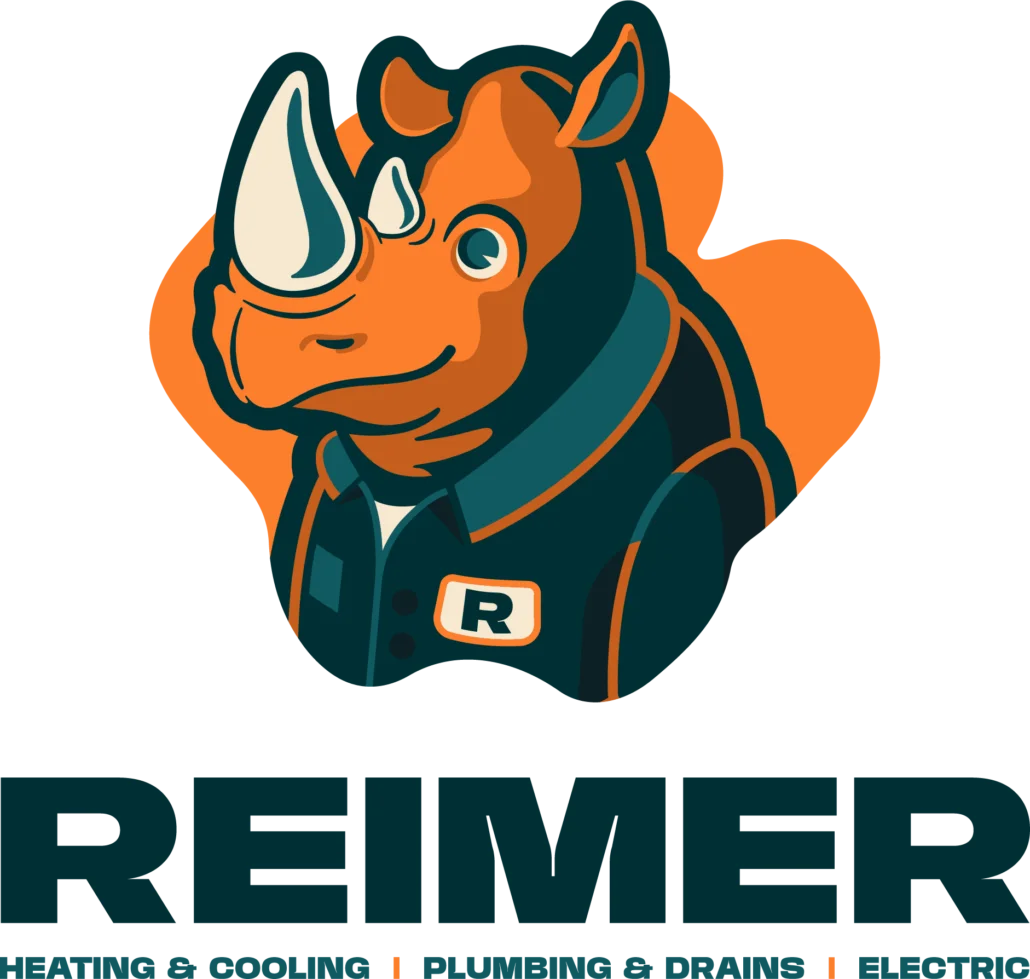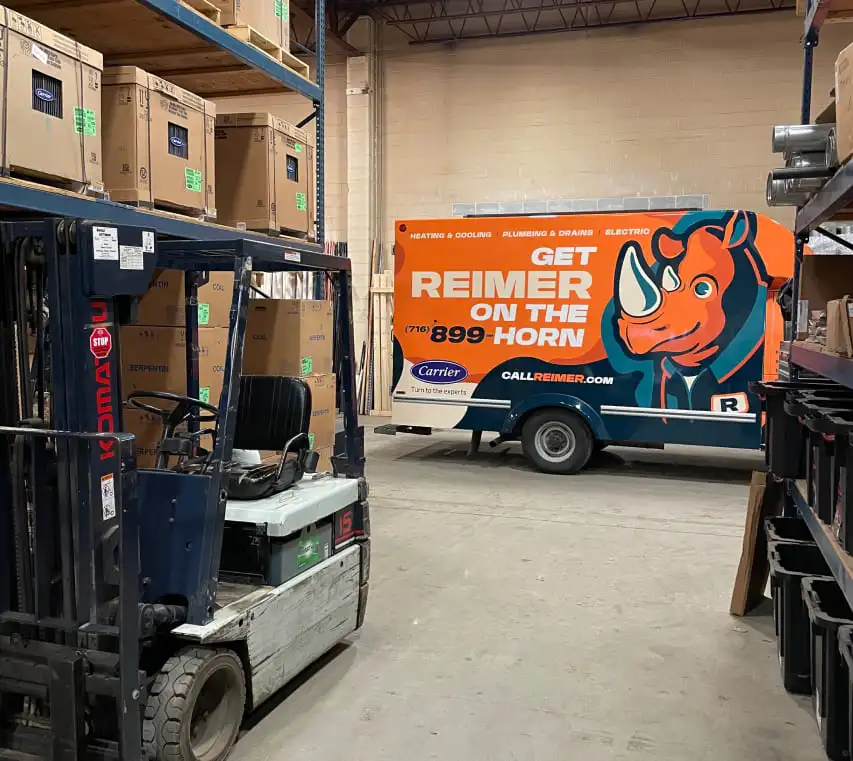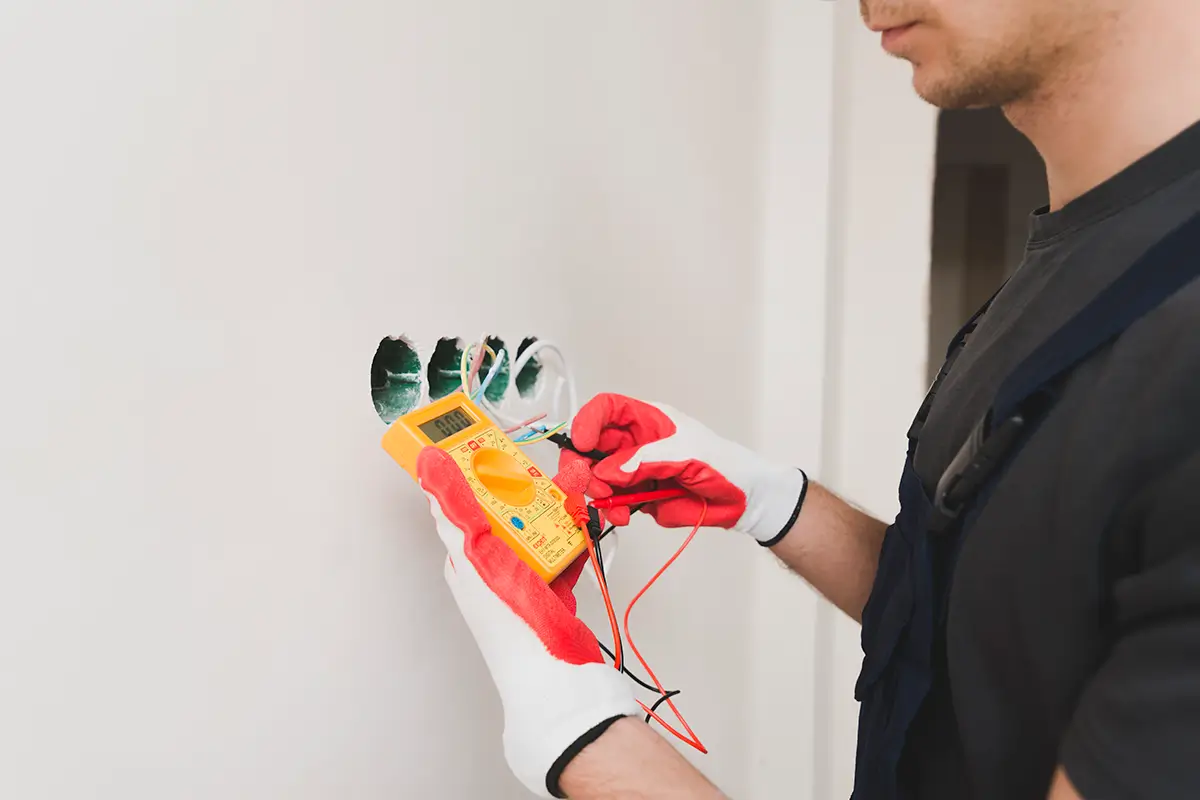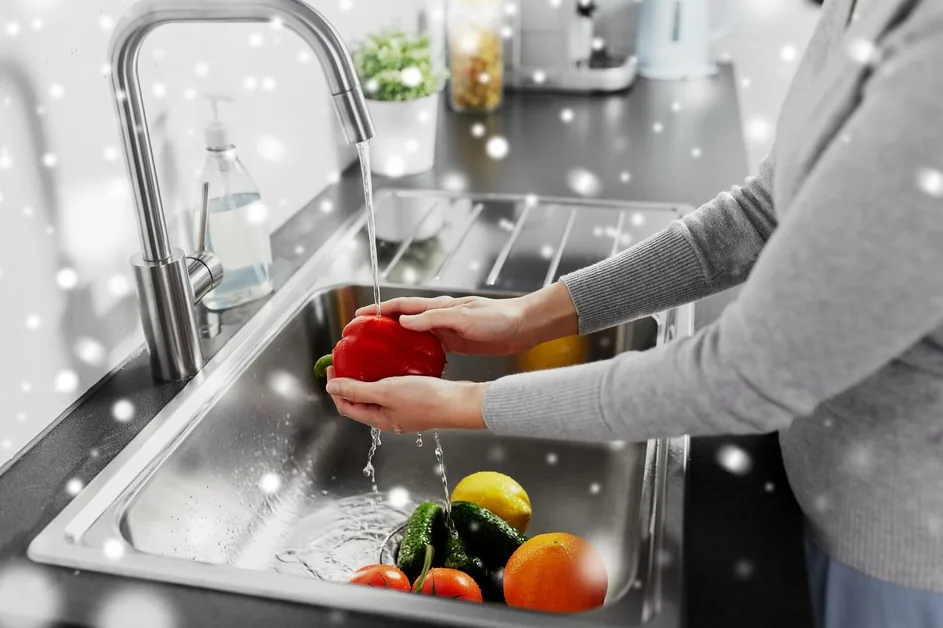Have you given much thought to the air you’re breathing indoors? While outdoor air quality gets all the headlines, our indoor environments can get laden with some pretty nasty contaminants as well. Dust, pollen, pet dander, mold spores, odors, fumes…they can all accumulate indoors over time and impact respiratory health.
That’s where air filtration comes in – acting as a powerful frontline defense against particulate and gaseous pollutants. Today we’ll break down for you what exactly air filters are, how they work, their benefits, and a host of other things to help you understand these filters more. So stay tuned!
What is Indoor Air Quality?
Raise your hand if you’ve ever walked into a room that just felt…stale. Or caught a whiff of something unpleasant and wondered “What is that smell?” When it comes to the air we breathe indoors, there’s a lot more going on than we often realize.
Outdoor air pollution gets all the headlines these days, but the truth is, indoor spaces like our homes, offices, and schools can develop their own air quality issues. Dust, pollen, pet dander, mold spores – these tiny particulate nasties find their way inside and get recirculated by heating and AC systems, settling on surfaces.
Then you’ve got volatile organic compounds (VOCs) – basically chemicals from household cleaners, paints, new furniture, and the like that can really compromise indoor air quality. Don’t even get us started on lingering cooking smells and smoke.
This stuff doesn’t just make for an unpleasant environment either. Poor indoor air has been linked to respiratory problems, headaches, fatigue, and irritation of the eyes, nose, and throat. If you or a family member has allergies or asthma, it’s an even bigger deal.
The good news? By understanding what constitutes good (and bad) indoor air quality, there are solutions to improve the situation. Using quality air filters is a powerful option that more and more people are turning to. We’ll dive deeper into that shortly.
Basics of Air Filtration
Let’s talk about how air filtration actually works to improve the air you breathe indoors. At the most basic level, it’s all about using specialized filters to physically remove those tiny airborne contaminants that you can’t see with the naked eye.
If you have a modern heating and cooling system, there’s likely some kind of filter already integrated into the ductwork. As the air handler pulls air in and circulates it throughout your home, that airflow has to pass through the filter first before getting redistributed to living spaces. That filter acts like a screening system, trapping a portion of microscopic particulates like dust, pollen, pet dander, mold spores, and the like.
Here’s the thing though – not all air filters are equal in terms of their filtering performance. They come in a wide range of materials, construction qualities, and efficiency ratings. The cheaper, basic filters only capture larger particulate sizes. But as you move up to higher-end filters, they use denser woven material that can trap incredibly small particle sizes that typical filters would miss.
Some of the premium filters also incorporate specialized media designed to capture gaseous pollutants and odors circulating indoors, not just physical particle contaminants. We’re talking things like activated carbon filters, aluminum oxide filters, and even filters that use static electrical properties to enhance their filtering capabilities.
The bottom line is that the higher quality the filter media, the more crud it can actually remove from your indoor air before that air gets recirculated. By installing high-efficiency filters and sticking to the recommended replacement schedules, your HVAC system is essentially scrubbing and cleaning the air on a continuous basis.
Now, we’ve just scratched the surface of air filtration basics. Coming up, we’ll dive deeper into the nitty-gritty details of specific filter types, efficiency ratings, sizing for your home’s needs, and more. But hopefully, you’re already getting a sense of why taking filtration seriously gives you a powerful tool for maintaining superior indoor air quality.
Types of Air Filtration
When it comes to air filtration, there are several different methods and filter media types out there. Each has its own strengths in removing various indoor air contaminants. Let’s take a look at some of the most common and effective options:
HEPA Filters (High-Efficiency Particulate Air Filters)
If you’re serious about removing particulate pollutants from your indoor air, HEPA is the gold standard. These filters utilize an incredibly dense mesh of submicron fibers that form a labyrinth-like network to trap particles. We’re talking an astoundingly efficient removal rate of 99.97% for particulates as small as 0.3 microns.
Pollen, dust mites, smoke, and even some bacteria and viruses have no chance of slipping through that HEPA gauntlet. While their upfront cost is higher, true HEPA filters are worth the investment for those struggling with allergies, or asthma or wanting maximum particle removal.
Activated Carbon Filters
Think of these as the odor and gaseous pollutant eliminators of the filter world. Activated carbon utilizes an extremely porous, sponge-like surface area to capture airborne molecules through the process of adsorption. As contaminated air passes through, the carbon chemically bonds with and traps volatile organic compounds (VOCs), odors, smoke, and other gaseous irritants.
Many premium filters pair activated carbon with particle removal media like HEPA for comprehensive air cleaning. While they require periodic replacement, carbon filters provide unbeatable defense against lingering household smells and off-gassing from paints, furnishings, and more.
Ionic Filters or Ionizers
This unique breed of air cleaners works by charging airborne particulates as they pass through an ionization field, causing them to become attracted to and gather on nearby surfaces. The key components are the ionizer that releases charged ions, and a charged collector plate that particles stick to.
While effective at removing particulate matter from air currents, ionic filters do produce trace ozone as a byproduct which some are sensitive to. They also require frequent cleaning or collector plate replacement to reset the ionization process. Ionic filters make a great supporting cast for particle removal but shouldn’t be relied upon as the sole air cleaning solution.
UV Filters (Ultraviolet Light Filters)
Don’t just trap airborne microbes – zap them with intense UV radiation! These specialized filters use UV-C light in the germicidal wavelength to essentially scramble the DNA and RNA of viruses, bacteria, mold spores, and other biological pollutants. As contaminated air circulates past the high-intensity UV lamps, it gets blasted with that concentrated radiation that damages and deactivates those microscopic invaders.
Many premium UV filters utilize a double-whammy approach by pairing the UV sanitation with a traditional filter media to capture particulates. While upfront costs are higher, UV is one of the most effective solutions for destroying airborne pathogens rather than just containing them. Just be sure to properly maintain and replace UV lamps per manufacturer guidelines.
Electrostatic Filters
These unique filters rely on the principles of static electricity to enhance particle adherence and capture efficiency. By applying an electrostatic charge to the filter media, it creates a powerful attraction for airborne contaminants to cling to the fibers like magnets as air passes through.
This allows electrostatic filters to often outperform standard filters of the same density when it comes to particle removal and resistance to airflow blockages. The caveat is you need to take proper safety precautions when cleaning or replacing these filters to discharge that static buildup first. But electrostatic models make a great option for those seeking a capture efficiency boost without the premium pricing of HEPA filters.
Fiberglass/Synthetic Filters
At the budget-friendly end of the filter spectrum are fiberglass and synthetic media options. These filters use low-cost spun fiberglass or synthetic manufacturing waste like plastics to create a basic mesh capture system for large airborne particulates. While affordable for lower efficiency needs, they typically can only remove objects like dust, dirt, and lint in the 10-30 micron range. Anything smaller like mold spores, bacteria, or smoke particles will pass right through the relatively wide mesh openings.
Fiberglass in particular can also potentially shed small fibers that get redistributed through your HVAC system. For decent baseline filtration on a tight budget, these make sense. But health-conscious homeowners will likely want to explore higher performance filter media.
Pleated Filters
Don’t let their humble looks fool you – these pleated air filters pack a particle-capturing punch! By using a dense cotton or polyester mesh that’s arranged in a tight pleated geometry, they’re able to increase overall surface area exponentially within that compact frame. This translates to much higher dust-holding capacity and longer lifespans compared to non-pleated filters of the same dimensions.
The pleating also helps reduce airflow resistance to maintain good HVAC efficiency. While they can’t reach true HEPA levels, many pleated filters achieve impressive sub-micron particle capture at a reasonable cost. Just be sure to consistently replace them once they’ve hit their dirt-loading limit.
Media Filters
When you need serious air filtering firepower on a larger scale, media filters are the way to go. Rather than containing the filter media in a rigid frame, these heavy-duty beasts are constructed of filtering materials arranged in V-shaped cross-sections or pockets up to 24 inches thick. This beefy configuration allows for incredibly high dust holding capacity while maintaining low air resistance – critical for commercial and industrial HVAC applications cycling massive air volumes. From basic disposable media filters all the way up to rigid-celled models with HEPA-grade efficiencies, these filters ensure even the dirtiest jobs get properly scrubbed air.
Washable Air Filters
For the sustainably-minded air filter user, reusable washable filters are an eco-friendly option that cuts down on replacement waste. Made from sturdy mesh-like materials like aluminum, these filters can simply be rinsed off periodically to remove built-up dirt and particulate matter, then air-dried before reinstalling.
While not advisable for allergy/asthma sufferers due to their limited sub-micron capture abilities, washable filters provide basic large particle filtration at a low cost of ownership. They also work better in low airflow conditions where pressure drop is a concern. Just be diligent about that regular cleaning schedule to keep them operating properly.
In summary, there’s no one-size-fits-all air filter that checks every box. The ideal filter will depend on factors like your indoor air quality needs, HVAC system capabilities, and budget considerations. But understanding the unique strengths and limitations of each major filter type allows you to make an informed decision that keeps your indoor air as clean, healthy, and comfortable as possible.
Benefits of Improved Indoor Air Quality
We’ve covered the nitty-gritty details of how air filtration works and the different filter types on the market. But let’s zoom out for a second – why does improved indoor air quality even matter that much? As it turns out, breathing easier and minimizing exposure to airborne contaminants packs some serious benefits.
Direct Health Impacts
For starters, there’s the direct health impacts. Poor indoor air has been linked to respiratory issues like asthma, allergies, chronic sinus congestion, and more. By reducing concentrations of dust, pollen, pet dander, mold spores, and other particulates through filtration, you clear a path for easier breathing. No more dealing with frequent asthma attacks, ruined sinuses, or struggling through each allergy season.
Minimizing Risks from Gaseous Pollutants
Then you’ve got the risks posed by gaseous pollutants like volatile organic compounds (VOCs) off-gassing from household products, smoke, and even radon or carbon monoxide infiltration. Many filters specifically target these noxious vapors and odors that can cause headaches, nausea, and long-term harm with repeated exposure. Improved filtration helps create a safer indoor air sanctuary.
Mental and Emotional Benefits
Air quality isn’t just about physical health either. Have you ever felt that brain fog, fatigue, or lack of mental clarity that comes from spending too much time in a stuffy, contaminated environment? Using filters to continuously cycle in fresher air can provide an immediate boost to productivity, concentration, and overall mood. No more fighting through that muggy, stale air sapping your energy.
Reducing Pathogens
There are also some lesser-known protections that come with filtration like reducing pathways for viruses, bacteria, and other infectious agents to circulate indoors. While filters shouldn’t be relied upon as the sole defense, they can significantly minimize transmission risks as part of a broader strategy. Especially important for households with elderly, immunocompromised, or high-risk individuals.
Protecting Your Home
Don’t forget the impacts on your home itself too! Excessive indoor air pollution accelerates deterioration and buildup on HVAC components, electronics, furniture, and decor over time. Proper filtration keeps contaminant concentrations down to preserve the longevity and efficiency of your biggest investments.
At the end of the day, making that commitment to routinely refresh indoor air quality just makes living spaces more comfortable, healthier sanctuaries overall. Once you experience what it’s like to breathe easy in a filtered environment, you’ll never want to go back! It’s an investment that keeps paying dividends.
Impact of Air Filters Beyond Air Quality
When you start exploring the world of air filtration, it’s easy to solely focus on the direct impacts to indoor air quality. And don’t get me wrong – removing particulates, neutralizing odors, and reducing exposure to pollutants is absolutely the core benefit. But there are actually some underrated side effects and secondary benefits to using quality air filters that are worth calling out.
Lowering Heating and Cooling Costs
For one, did you know better air filtration can potentially lower your heating and cooling costs over time? Think about it – the cleaner the air circulating through your HVAC system, the less buildup occurs on components like the evaporator coils, heat exchangers, and ductwork. All that gunk acts as insulation, restricting airflow and making your system work harder. By maintaining a filter-strong first line of defense, you reduce strain and increase efficiency.
Extending HVAC Service Life
You’re also extending the overall service life of your entire HVAC setup by preventing excessive contamination accumulation. Coils, fans, and other pricey parts simply don’t have to work as hard in a cleaner air environment. That translates to fewer premature breakdowns and repair costs over the lifespan of your system.
Specialized Environmental Benefits
There are even benefits in specialized environments like labs, art studios, museums or grow rooms where uncontrolled air particulates could ruin sensitive equipment, archival materials or crops. The right filters create a stable, contamination-free air supply to support these dedicated applications.
The bottom line is that while improving air quality is still the primary objective, viewing filters as just an air hygiene nicety overlooks their broader value. From energy savings to asset preservation to specialized environmental controls, high-performance air filtration has the potential to positively impact various facets of your life. It’s an underrated workhorse that deserves some additional credit!
Importance of Correct Installation and Maintenance of Air Filters
Getting the right air filters selected and sized for your home is crucial. But what good is that investment if they aren’t properly installed and maintained? Correct installation and sticking to recommended maintenance schedules is just as important as choosing the right filter model.
Installation Best Practices
Let’s start with installation. For basic residential systems, it’s generally an easy process a homeowner can handle themselves. The key is making sure you have the proper fit for your HVAC air handler’s filter slot – not too tight where it buckles, and not too loose where air can bypass around it. Be sure to follow the manufacturer’s instructions on airflow direction arrows too.
Professional Installation for Complex Systems
With larger or commercial systems utilizing high-capacity filters, you’ll likely want an HVAC professional to handle the initial installation. Techs know all the best practices for properly sealing gaskets, ensuring even airflow distribution across the filter banks, and securing them at the ideal orientation for maximum efficiency.
Importance of Timely Maintenance
Either way, having an HVAC expert change out those filters on schedule is highly recommended for a few reasons. First, they can identify any installation issues early on and correct them. They also have the right tools and safety gear for carefully removing used filters without spreading collected debris everywhere.
Regular Inspection and Replacement
Most residential filters will need swapping every 1-3 months depending on usage. But don’t fall into the “set it and forget it” trap – regularly inspecting filters is a must. Once you notice areas blocked with visible buildup or the HVAC system straining due to a pressure drop, it’s time for a refresh.
Handling Larger Filters
With larger pleated or pocket filters, change intervals are longer in the 6-12 month range. But consider having an HVAC tech do a mid-cycle inspection to track filter loading. This allows you to optimize scheduling and catch any excess wear issues early before airflow gets too restricted.
Maintenance Tip
And a quick tip – write the installation date on those new filters using a permanent marker! That way there’s no guesswork for when they’ve reached their service life next time around.
Proper installation sets filters up for success, while timely maintenance keeps that clean air consistently flowing. Don’t skimp on either if you want to maximize your indoor air quality investment!
Common Misconceptions About Air Filters
In the world of air filtration, there’s a lot of misinformation and misconceptions floating around out there. From assuming all filters are created equal, to unrealistic expectations around performance, it’s easy for homeowners to get tripped up. Let’s take a few minutes to clear the air on some common filter myths and mistakes.
Any Filter Will Do
One of the biggest misconceptions is that filter quality doesn’t matter as long as you have something installed. Hate to break it to you, but that thin $3 fiberglass filter from the hardware store does basically nothing to protect indoor air quality. Particulate gets right through those wide mesh openings like a hot knife through butter. Springing for higher MERV ratings and denser filter media makes a massive difference.
Filters Are a One-Time Investment
There’s also this idea that filters are a one-and-done purchase. You replaced yours last year, so you’re good forever right? Wrong. Even premium filters have finite lifespans and dirt-loading capacities before airflow suffers. Following those recommended replacement intervals is absolutely critical for consistent air cleaning.
More Airflow Is Always Better
And speaking of airflow, don’t just assume more is always better. While modern high-efficiency filters allow adequate circulation, there are limits to how densely constructed they can be. Start choking off too much system airflow and your HVAC components will scream uncle with inflated energy costs and hot/cold spots.
Filters Can Completely Eliminate Odors and Pollutants
Let’s dispel the belief that filters can completely eliminate odors and gaseous pollutants too. While quality activated carbon filters help immensely, that smelly cuisine or new piece of furniture will still off-gas odor compounds faster than filters can remove them all initially. It takes time and cycling the air repeatedly.
Filters Are a Sure Shield Against Microbes
Finally, we can’t tell you how often people view filters as some magic anti-microbial forcefield against viruses and germs. Filtration helps reduce overall exposures tremendously, don’t get us wrong. But those tiny microbes can still slip through most residential filters if someone is actively infected and viral shedding in your home’s air supply. Filters are just one layer of protection.
The key is setting realistic expectations for what filters can and cannot do based on their specifications. With the right types installed properly and maintained routinely, they’re a powerful tool in your indoor air quality arsenal. Just don’t buy into those filter fallacies and think it’s a cure-all!
Unleashing the Power of Air Filters for a Healthier Home
When you really stop to think about it, making an effort to improve indoor air quality is one of the smartest investments for keeping your family healthy, comfortable, and worry-free at home. From cutting down allergy and asthma flare-ups to minimizing exposure to funky odors and pollutants – cleaner indoor air just makes life better.
And you’d be hard-pressed to find a more versatile and powerful solution than professional-grade air filtration. Whether you need basic particle filters, heavy-hitting HEPA models for severe allergies, or germ-zapping UV sanitizers, filters offer a comprehensive way to get that air supply consistently scrubbed clean.
Here in Western New York, the team at Reimer has spent over 100 years helping locals enhance their indoor environments through top-notch home services. As a trusted provider since way back in 1921, we know air filtration tech inside and out. Our certified air quality experts can take a look at your setup and get you dialed in with exactly the right high-efficiency filters.
From basic pleated media all the way up to whole-home UV purification rigs integrated into your HVAC – Reimer makes filter installation and maintenance a total turnkey process. We’ll size it, select it, hard-wire it in, you name it. And you can count on us to swing by and keep those filters swapped on schedule to maintain peak performance.
The bottom line? You shouldn’t have to resign your crew to questionable indoor air quality a single day longer than necessary. With Reimer’s guaranteed professional experience, cleaner, healthier, fresher air in your home is just a quick call away. Dial (716) 272-2371 today or visit our website to schedule your free filter consultation. Don’t wait to start breathing easier with Western New York’s premier home services partner!





